Is it time to replace your torque wrench or can it be repaired?
Industries all over the world depend on torque wrenches to perform daily operations, and workers rely on the accuracy of their wrenches to ensure both safety & quality. Proper maintenance of your wrench is a necessity, as is regularly scheduled calibration. However, even with proper maintenance, accidents happen. Over time, tools become worn & may require repair.
Occasionally, the damage is too severe, and replacement is the only option. As a general rule of thumb, if the cost of repair is higher than half the cost of replacement, it’s better to replace the equipment. The rationale behind this principle is that the aging equipment could potentially require additional repairs in the future. If that’s the case, the cost of repair would eventually exceed the cost of replacement.
So how do you know if your torque wrench can be repaired? The Michelli Weighing & Measurement service team has provided a few examples of when replacement is recommended, when repairs are recommended, and when repairs may be possible.
Can Your Mechanical Torque Wrench Be Repaired?
Here are some instances in which we recommend repair:
Please keep in mind, all repairs depend on the availability of parts. Also, after any repair, your equipment requires calibration to ensure accuracy.
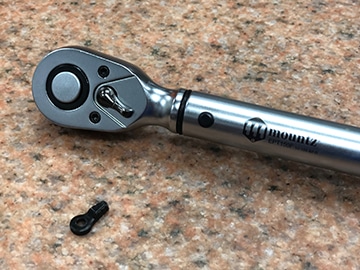
1. Directional switch is broken
An expert can repair a broken directional switch on a torque wrench.
What causes this issue?
Various factors could cause a broken directional switch, but the most common cause is forcing the switch, or misuse of the wrench.
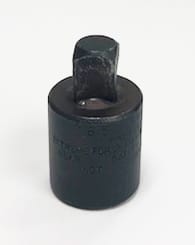
2. Square Drive is Twisted or Bent on a Click-Type Torque Wrench
An expert can repair a twisted square drive in a click-type torque wrench.
What causes this issue?
Improper use of the wrench is the most common cause of a twisted or bent square drive.
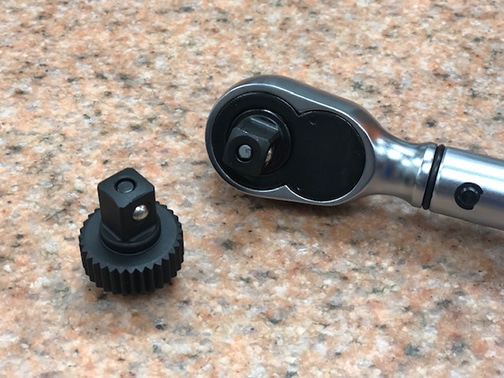
3. Ratcheting Click-Type Torque Wrench is “Free-Wheeling”
Torque wrench “free-wheeling” refers to the square drive spinning freely, without any resistance or audible ratcheting. An expert can repair free-wheeling.
What causes this issue?
Free-wheeling damage is most often caused when the wrench has sustained some sort of impact, such as a drop.
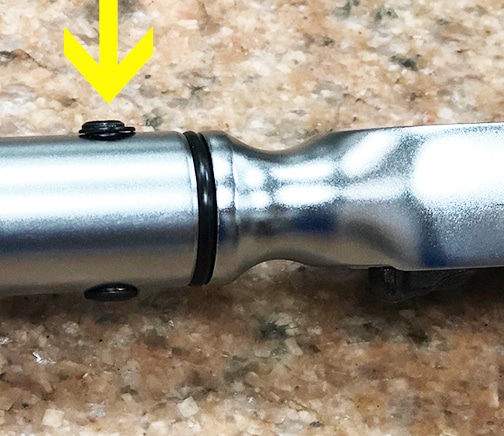
4. If the torque wrench head setting pin is gone
Occasionally, setting pins come loose and disappear. An expert can replace setting pins, as long as the replacement parts are available.
What causes this issue?
Users most often lose setting pins when a wrench is dropped.
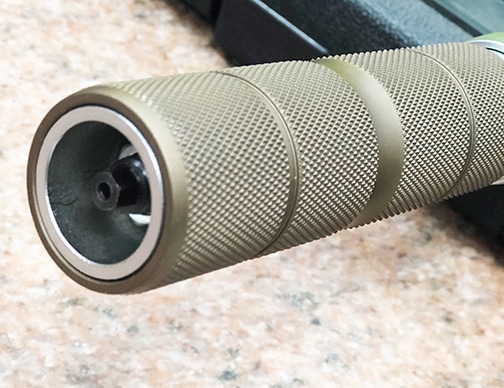
5. If the torque setting rod protrudes past the end of the handle
In some instances, the inner rod of a torque wrench handle begins to protrude past the bottom of the handle grip. This can be repaired by an expert.
What causes this issue?
This issue is caused by improper reassembly of a torque wrench. In some cases, users try to repair issues such as a freely spinning handle on their own. After self repair, reassembly & use, issues like setting rod protrusion may arise.
Still unsure if your torque wrench can be repaired?
There are various examples of other possible torque wrench repairs. If you are unsure whether or not your wrench can be repaired, reach out to your local calibration lab for a definitive answer.
Have an accredited laboratory calibrate your torque wrench after any kind of repair. Michelli Weighing & Measurement has an experienced team of calibration technicians located in various ISO 17025 accredited calibration laboratories throughout the Southern & Western USA. We would love to help. Please contact your nearest Michelli location for more information, including pricing & lead time.
When to Replace Your Mechanical Torque Wrench
Here are some instances in which we recommend replacement:
When purchasing a new torque wrench, always check with your distributor to ensure that the purchase price includes accredited calibration.
1. Fixed-Head Torque Wrench – Square Drive is Broken
Any type of torque wrench with a fixed head and a broken or twisted square drive cannot be repaired.
What causes this issue?
Misuse/abuse of the wrench is the most common cause of a twisted or broken square drive.
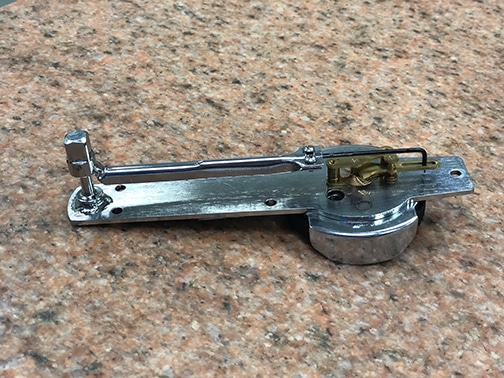
2. If the torque wrench cannot hold accuracy
If the user tightens 5 bolts using the same amount of pressure at the same torque, but the first bolt is fastened tighter than the fifth, then the wrench is not holding accuracy. The wrench should be replaced.
What causes this issue?
There could be several causes. Over time, wear & tear takes its toll on equipment. Aging torque wrenches may begin to lose accuracy. Also, improper storage will eventually lead to a loss of accuracy.
3. Torque Wrench Barrel is Bent
If the barrel of the wrench is bent or severely dented, it cannot be repaired. Torque wrenches are precision instruments & if the barrel is damaged, the inner components are most likely damaged as well.
What causes this issue?
A bent barrel could be caused by misuse or by dropping the wrench. For example, using a breaker bar, using the wrench as a hammer, or any other type of impact could cause a bent torque wrench barrel.
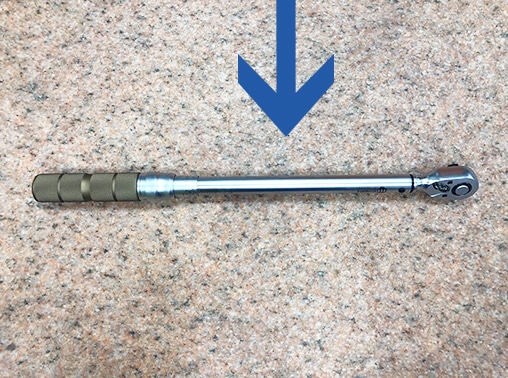
4. Damage to Torque Wrench Indexing
If the indexing, or the chart of numbers that represent the torque values, is no longer visible, then the wrench is irreparable. In order to be used, the wrench must be set to a known value. If the values have been scraped off or worn down, then the wrench should be replaced.
What causes this issue?
Torque wrench indexing could be damaged by painting the wrench, scratching the indexing, or normal wear to the area where the indexing is located.
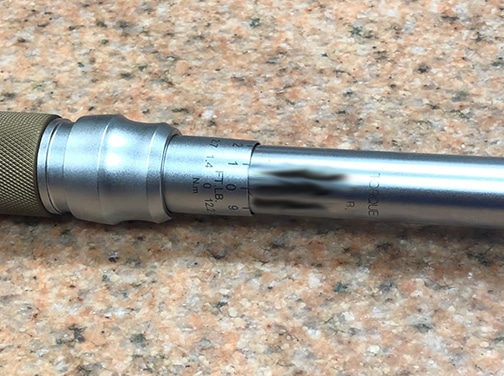
How can you avoid torque wrench replacement?
Unfortunately, tools need to be replaced sometimes. How can you avoid the hassle and costs associated with torque wrench replacement? First, you should purchase quality equipment that will stand the test of time. Second, exercise proper wrench care to maximize the useful life of your equipment. For guidance on proper wrench maintenance, visit our blog post Tips on Torque Wrench Care.
The Gray Area
In some situations, it’s difficult to decide whether or not torque wrench repair is possible. Here are some examples:
In these situations, always contact your local calibration laboratory to decide the best course of action. It’s more than likely that the cal lab will need to actually see your wrench in person to determine if repair is possible.
1. Rust, dirt or other material has seized the wrench
If foreign material like rust or dirt has seized the wrench, it may be repairable. The option to repair depends on the extent of the damage caused by the material. In this photo, concrete has seized the bottom handle of the torque wrench & the wrench is irreparable.
What causes this issue?
If dirt has seized the wrench, it may have been an accident in which the wrench was dropped into some foreign material that caused irreparable damage. Improper storage is also a common cause of dirt, and especially rust, causing seizure of the torque wrench.
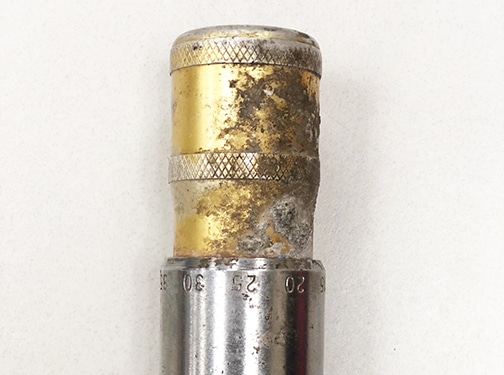
2. If the handle spins freely
In some cases when the bottom handle of a torque wrench is spinning freely, professionals are able to repair the wrench by replacing the ball bearings. In other cases, when the trench at the base of the barrel has sustained damage, the wrench is not repairable.
What causes this issue?
Various factors could cause the bottom handle to spin freely. The most common cause of this issue is the wrench sustaining an impact of some kind. For example, after a torque wrench has been dropped or used as a hammer, the handle might begin to spin freely.
Contact the Torque Wrench Experts at Michelli Weighing & Measurement
Whether you need a torque wrench repair, replacement, or calibration, Michelli Weighing & Measurement can help. We can also offer support if you’re unsure whether you need a wrench repair or a replacement. Let us take a look at the wrench to determine if it’s repairable, then help you compare the cost of repair verses the cost of replacement.
The decision of whether to repair or replace your equipment is yours to make, and we’re here to help.
